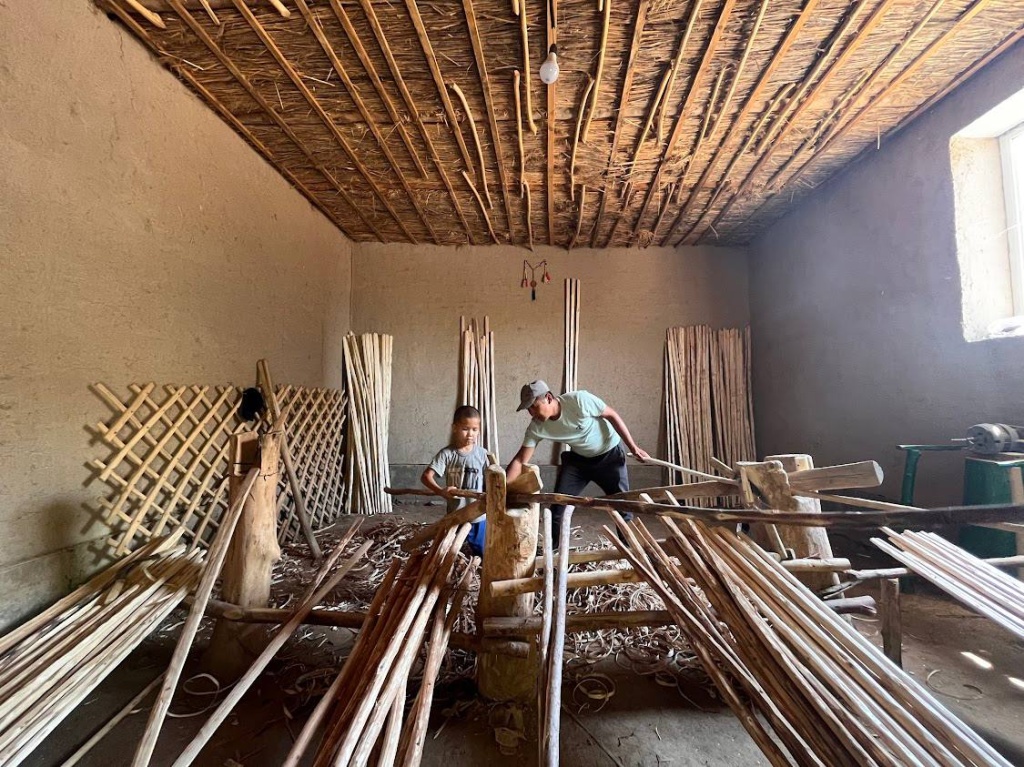We’re sharing why community-based tourism is a great idea and where to find such experiences in Uzbekistan. This is a new article by our author Sophie Ibbotson. You can find her previous piece about traveling to Uzbekistan in winter via the link.
Sophie Ibbotson, Uzbekistan Tourism Ambassador to the UK, @uzambassador

I generally find that tourists come to Uzbekistan for the monuments, but it is the people they meet during their trip who leave the strongest lasting memories. Whether it is the tour guide or driver, homestay host or a souvenir seller, there can be no tourism without people, and it is only right that everyone playing these indispensable roles in the industry receives their fair share of the benefits. This is why I am such a vocal proponent of community-based tourism: it is better for local people and for tourists!
Across Uzbekistan, I see growing awareness of the value that community-based tourism can bring, not just economically but socially and culturally, too. That awareness is spurring entrepreneurs in villages and cities to think of new ways of hosting and engaging with visitors. These are a few of my favourite places to experience authentic, community-based tourism.
Sentob Village, Navoi Region

Sentob is the first village in Uzbekistan to receive UN Tourism’s Best Tourism Villages award, joining a global network which prioritises community-based tourism as a driver of economic and socio-cultural development. I first visited Sentob with a small group of travel journalists in 2019: they fell in love with Rahima’s simple homestay, the beauty of the riverside orchards, and the variety of hikes to nearby waterfalls, shrines, and petroglyphs. In the intervening years, more and more families in Sentob have opened their own guesthouses, serve meals, give performances of music and dance, and offer guided tours of the local area, giving visitors the chance to experience rural life in an idyllic location.
Karakalpak Awl in Nukus, Karakalpakstan
Community-based tourism doesn’t have to take place in a village: Karakalpak Awl is on the edge of a city! This traditional-style Karakalpak yurt camp overlooks a scenic lake, Ashikul, and was built with support from USAID. The comfortable yurts have beds and electricity, and there’s an immaculate shared toilet and shower block nearby. Guests dine together on traditional Karakalpak foods, are treated to live cultural performances, and can also visit a sewing workshop. Here you can try on, take photographs of, and buy authentic Karakalpak clothes direct from the women who make them.
Hayat Village, Jizzakh Region

Hayat has a handful of family-run guesthouses strung out through the village. My favourite overlooks the stream, with carefully-placed benches in its lush, green garden. This is where I bring guests in springtime, to see the Nuratau Mountains bursting into life after the dormancy of winter. There are numerous viewpoints within hiking distance of the village, but early in the morning I most like to climb up into the valley behind, to see the enclosure where there’s a wild sheep conservation project. On the way up you will likely be stopped by a local, and given a handful of sweet dried mulberries to eat.
Shirin Ethno Village, Bukhara Region

A short drive from Bukhara, the villagers of Shirin have come together to create an immersive cultural experience for visitors. You can stay here in a guest room or yurt, there is a small museum of domestic items and agricultural tools; and during festivals such as Navruz, locals host cultural performances and handicrafts exhibitions. One of the highlights here, though, are the cookery demonstrations and masterclasses. It is a prime opportunity to learn to make samsa, or to bake bread in a clay tandor, and then to feast on the fruits of your labour, enjoying the meal with your new-found friends.
Chimbay, Karakalpakstan

Have you ever wondered how a yurt is made? In Chimbay, there are two traditional yurt workshops you can visit, both producing Karakalpak, Kazakh, and Mongolian yurts. It is fascinating to watch the craftsmen at work, meticulously shaping each part of the yurt frame. After school, boys sit with their fathers and grandfathers, learning their ancestral trade. At one of the workshops there’s a simple guesthouse where you can stay the night, and GIZ is planning to erect a restaurant yurt so that day trippers from Nukus can enjoy a leisurely lunch.
Rishtan, Fergana Valley

Rishtan is famed across Uzbekistan and beyond for its ceramics. Several of the factories open their doors to tourists, offering guided tours so you can learn about the throwing, painting, and glazing of these exquisitely beautiful pots and plates. The workshop of master potter Rustam Usmanov is well set up to receive groups of guests and serves lunch in an attractive, shaded courtyard. It’s also a prime opportunity for some retail therapy: the quality of the products is generally much higher than in the tourist shops of Samarkand and Bukhara.
Art Residences, Tashkent City
In the Tashkent mahallas — neighbourhoods, of Namuna and Khast Imam, Studio KO architectural bureau has created two artists’ residences with support from the Art and Culture Development Foundation. This is a new project, launched this year, to enable artists to live and work in Old Tashkent. The residences are co-working spaces and cultural hubs where artists, curators, and researchers from Uzbekistan and abroad can come together and collaborate on innovative artworks and related projects. There’s an element of cultural immersion, and even a short walk through the mahalla will bring inspiration.
Gijduvan, Bukhara Region

For generations, the Narzullaev family has produced Gijduvan’s best ceramics. In recent years, they have opened up their home and workshop to guests, demonstrating not only their own ceramics but suzani and carpet making, too. In addition to taking an English-language tour, you can sit and have tea, see their museum pieces, and shop. It is also possible to stay at the complex and take masterclasses, whether you are a complete beginner or a more advanced ceramicist looking to refine your skills.
When planning your visit to Uzbekistan, don’t just consider places to go: prioritise in your itinerary the experiences you want to have. Through community-based tourism you can get under the skin of the country, appreciating more fully the richness of its cultural heritage and the warm hospitality of the Uzbekistani people.














